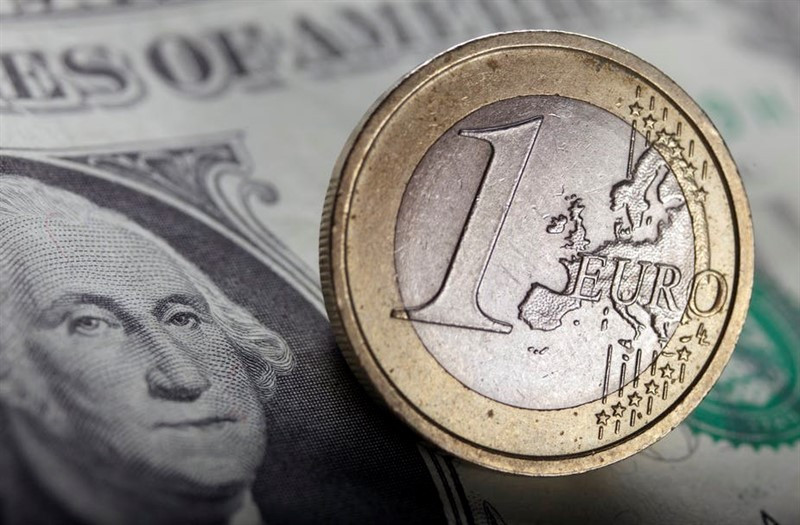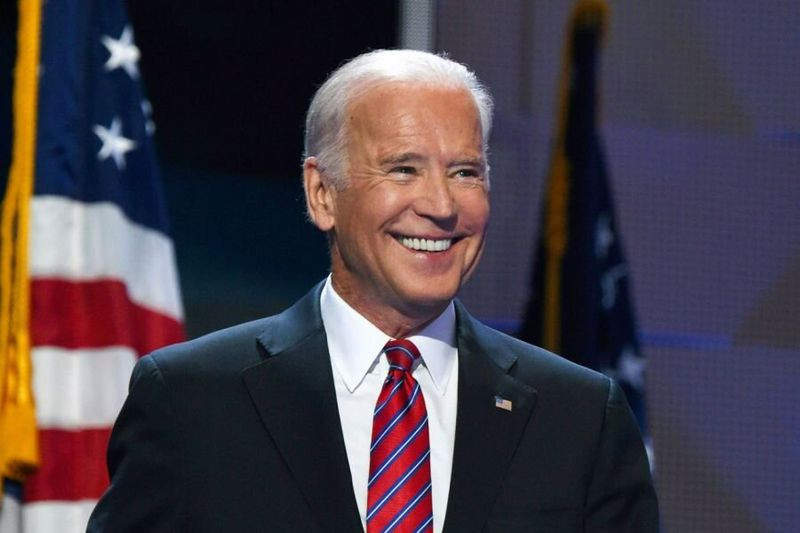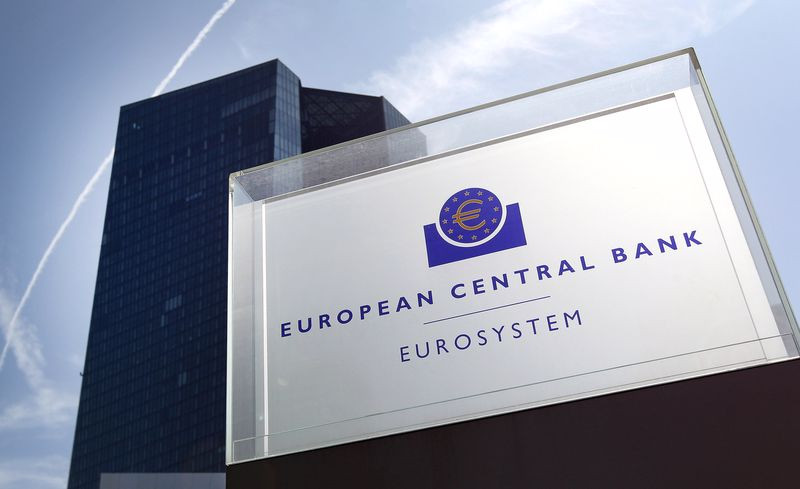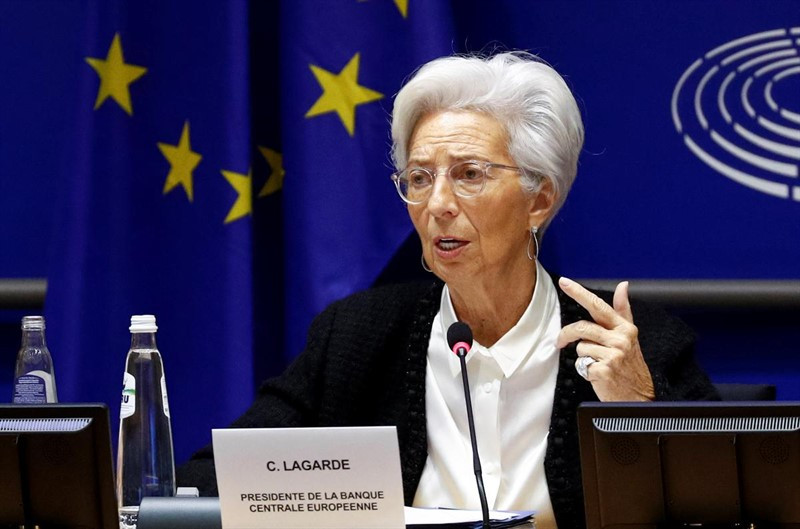
The greenback started the new week on a minor note, tracking an increase in risk appetite in global markets.
The USD index fell by more than 0.8% on Monday and finished just above 102.00 points. At the same time, riskier currencies, including the euro, strengthened their positions along with stocks.
The key Wall Street indices ended yesterday's trading with a strong growth. In particular, the S&P 500 rose 1.86% to 3,973.75 points. At the same time, all 11 sectors of the index closed in positive territory.
US President Joe Biden said that the issue of duties on imports of Chinese goods is under consideration in Washington, and he intends to discuss it with the country's Finance Minister Janet Yellen after his return from Asia. Investors interpreted Biden's words as a signal of the possible cancellation of some duties.
"The market has been ready to rise for some time. However, this does not mean that the downward trend that has been observed since the beginning of this year has ended. This is a respite after the active sale of shares in the last two months," Kingsview Investment Management analysts said.
Stock investors are under the illusion that the US central bank will save the market from further decline by easing monetary policy, or what is also known as the "Fed way," according to economists at Mizuho Securities.
"It will be a very, very sluggish environment for growth, and the Fed is not going to prevent this. You see how the bond market yields are falling.
This tells the stock market that there is no confusion, and therefore the stock market also needs to adjust," they said.
Most experts surveyed recently by Bloomberg predict that the S&P 500 will continue to decline this year and drop to about 3,500 points, which is almost 12% lower than yesterday's closing level and 27% lower compared to the January peak.
Only 4% of respondents believe that the S&P 500 has already reached the bottom. At the same time, 6% of respondents admit a drop in the index to 2200-2400 points – values that were recorded at the height of the COVID-19 pandemic.
When asked what event should happen for the Federal Reserve to switch to a dovish policy, 47% of respondents said they expected the S&P 500 to fall by 30% compared to the peak value. The same number said that for this to happen, unemployment in the United States should rise to 6% from 3.6% currently.

Over the past 40 years, the S&P 500 index has bottomed out with a drop from peak to low of 20% or so four times: in 1990, 1998, 2011 and 2018. Four more times it suffered much greater losses, as the market was seized by a real panic.
In all cases of a 20% drop, the "culprit" was the Fed. Each time the market reached the bottom when the central bank eased monetary policy, and the fall in the stock market may have forced the Fed to treat threats more seriously than it could have been otherwise.
However, this time FOMC officials are not afraid of falling markets, but that inflation expectations may become uncontrollable. There is a possibility that people will be disappointed in the Fed's ability to tame inflation, and this will lead to a jump in prices.
Everyone remembers perfectly well how last year Fed Chairman Jerome Powell said that inflation in the country is "temporary" and will soon decrease by itself. But only the lag between industrial and consumer inflation turned out to be "temporary". And this lag has really decreased, due to an increase in consumer inflation.
"They will have to monitor the situation very closely," former Fed chairman Ben Bernanke said last week, referring to central bank officials.
"People see how gasoline and food prices are rising from week to week, and this will affect their inflation expectations. So we don't know how much time the Fed has," he said.
The central bank intends to tighten policy until inflation is suppressed, or something breaks. Only the threat of a recession can prompt the Fed to reconsider raising rates.
Powell and his colleagues hope that the Fed will be able to provide a "soft landing" of the economy.
The president of the St. Louis Federal Reserve, James Bullard, believes that the probability of a recession in the United States is low.
According to him, the national economy will continue to move forward due to high consumption. Gross domestic product growth will range from 2.5% to 3%, and the unemployment rate may fall below 3% by the end of the year, predicts Bullard.
"Without a doubt, we are facing serious global challenges, and first of all inflation, which is causing a serious blow to households. But there is also no doubt that the United States is in a better position compared to other leading countries in terms of the ability to cope with inflation without losing all economic growth," Chief economic adviser to the White House Brian Deese said on Sunday.
A day later, Biden spoke in a similar vein. On Monday, he acknowledged that the American economy has problems, but stressed that a recession is not inevitable.

However, the "hard landing" of the economy is becoming more and more real in the eyes of large investment banks.
JPMorgan analysts reported that their quantum model indicates a 41% probability of a recession in America.
Goldman Sachs analysts estimate the chances of the US economy sliding into recession in the next two years at 35%.
Wells Fargo analysts expect a moderate recession in the country in late 2022 – early 2023.
To curb inflation, the Fed will probably have to raise interest rates more than once, and how high they will rise is a million-dollar question.
It can be assumed that the current rate of 1% and the expected growth rate, according to FOMC forecasts, up to 3% by 2023 is not particularly critical for the economy in terms of servicing and refinancing debts at an increased rate, both by corporations and households.
At the same time, the US central bank has every chance to take control of inflation much faster than its European counterpart will do. To a large extent, this will be facilitated by the higher sustainability of the United States in terms of energy and food security.
In addition, the reduction of customs duties on products from China will be one of the measures of the White House to combat high inflation.
The latter suggests that American politicians show more flexibility in balancing tough sanctions and their own economic interests than their European partners.
It is obvious that the sanctions decisions taken in Brussels against Moscow only aggravate the already difficult situation in the European economy.
It is still unclear how far the European Union can go in its desire to abandon energy supplies from Russia.
The EU continues to work on the sixth package of sanctions against Russia, European Commission spokesman Eric Mamer said last Friday. "I can't divulge the details, but the work continues," he said.
A complete ban on the purchase of coal in Russia will come into effect in August of this year. The next steps may be an oil embargo and a significant reduction in gas purchases. Given the rather vague prospects regarding alternative supplies, it is unlikely that energy prices in the eurozone will begin to decline. This means that the "fuel" component of inflation in the EU will not go away in the foreseeable future.
Such prospects do not please the European Central Bank, which fears that delay in abandoning the stimulus policy may lead to an increase in the consumer price index in the region to levels when inflation will already be difficult to control.

The euro significantly strengthened against the US dollar on Monday after ECB President Christine Lagarde said that negative interest rates, characteristic of the eurozone for eight years, are likely to disappear by the end of summer.
"Given the current forecast, interest rates are likely to cease to be negative by the end of the third quarter," the ECB head said.
"If we see that inflation stabilizes at 2% in the medium term, then it will be appropriate to gradually further normalize rates towards a neutral level," she added.
The head of the Bundesbank, Joachim Nagel, in turn, said that, in his opinion, the ECB will raise interest rates in July and that this may be followed by a further increase.
Inspired by the prospect of a rise in interest rates in the eurozone, the EUR/USD pair jumped by 1.24% to 1.0690 yesterday. The single currency has risen in price against its US counterpart by about 3.6% since a few days ago it reached the lowest levels since January 2017 around $1,0350.
"Many market observers will continue to consider the ECB too indecisive, but the fact that there is likely to be a rate hike in July and that the central bank seems ready to raise rates further after that is positive for the euro," Commerzbank strategists said.
The EUR/USD pair continued to develop positive momentum on Tuesday, rising above 1.0700 for the first time since April 26.
Even a broad sell-off on the stock markets could not increase the US currency's appeal as a safe haven. The main Wall Street indexes are noticeably declining on Tuesday, losing about 2% on average.
Meanwhile, the greenback is under moderate pressure and is breaking below the key support at 102.00, marking new four-week lows.
If the negative momentum increases, the 55-day moving average, which is currently passing near 100.90, may come into play.
The deterioration of market sentiment helps the dollar limit losses and restrains the growth of the EUR/USD pair.

On Tuesday, ECB President Christine Lagarde said that markets should not translate any words of the central bank into percentage points by which rates will change.
These comments confirmed the baseline scenario of a 25bp rate hike in July.
The head of the Bank of France, Francois Villeroy de Galo, in turn, significantly cooled expectations of a summer rate hike by 50 bps.
He said that the rate hike by 50 bp is not part of the consensus of the ECB.
It should be understood that the ECB has much less room for maneuver in terms of tightening monetary policy than its US counterpart. Unlike the United States, a sharp increase in rates in the eurozone is almost impossible without critical consequences for the economies of individual countries. In such a scenario, a debt crisis may once again arise in the currency bloc, and states such as Greece and Italy will face the problem of servicing external debt.
If market participants come to the conclusion that the ECB is not coping with the current challenges, it will only accelerate the flight of capital from the eurozone to America and create additional difficulties for the EU economy.
At the same time, the energy situation in the United States looks much more optimistic. At least, the United States does not have a strong dependence on supplies from Russia, but it has its own resources that even allow it to make money on supplies of liquefied natural gas to the EU.
In addition, the currency bloc is much more vulnerable in terms of food security than America, which is one of the largest grain exporters.All this does not make the euro a more attractive object for investment than the dollar.
Traders cut some of their short positions on EUR/USD after Lagarde said interest rates were likely to be in positive territory by the end of the third quarter.
Given the Fed's willingness to continue raising the key rate in 0.5% increments, by September the cost of borrowing in the US may exceed 2% against a potential 0% in the eurozone.
There is reason to believe that the difference in the rates of the ECB and the Fed will remain one of the main factors of the euro's weakness against the US currency.
However, in light of the current price movement, the continuation of the EUR/USD recovery looks likely, at least in the very near future. The next upward barrier appears at 1.0785 (55-day moving average) before the three-month resistance line around 1.0840. The breakthrough of this line should soften the selling pressure and cause a rise to 1.0935.
On the other hand, the initial support is at 1.0670, followed by 1.0610 and 1.0560.
 English
English 
 Русский
Русский Bahasa Indonesia
Bahasa Indonesia Bahasa Malay
Bahasa Malay ไทย
ไทย Español
Español Deutsch
Deutsch Български
Български Français
Français Tiếng Việt
Tiếng Việt 中文
中文 বাংলা
বাংলা हिन्दी
हिन्दी Čeština
Čeština Українська
Українська Română
Română

